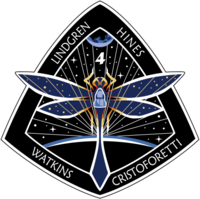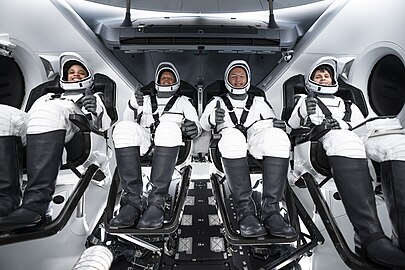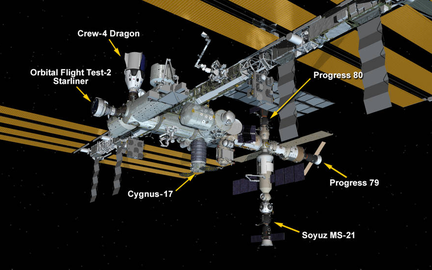
Samantha Cristoforetti is an Italian European Space Agency (ESA) astronaut, former Italian Air Force pilot and engineer. She is the second of two women sent into space by ESA and the first from Italy. Cristoforetti holds the record for the longest uninterrupted spaceflight by a European astronaut, and she held the record for the longest single space flight by a woman until this was broken by Peggy Whitson in June 2017, and later by Christina Koch. She took command of ISS Expedition 68 on 28 September 2022.

Kjell Norwood Lindgren is an American astronaut who was selected in June 2009 as a member of the NASA Astronaut Group 20. He launched to the International Space Station (ISS) as part of Expedition 44/45 on July 22, 2015.

The Boeing Starliner is a class of partially reusable spacecraft designed to transport crew to the International Space Station (ISS) and other low-Earth-orbit destinations. It is manufactured by Boeing, with the Commercial Crew Program (CCP) of NASA as the lead customer. The spacecraft consists of a crew capsule that can be reused on up to ten missions and an expendable service module.

Development of the Commercial Crew Program (CCDev) began in the second round of the program, which was rescoped from a smaller technology development program for human spaceflight to a competitive development program that would produce the spacecraft to be used to provide crew transportation services to and from the International Space Station (ISS). To implement the program, NASA awarded a series of competitive fixed-price contracts to private vendors starting in 2011. Operational contracts to fly astronauts were awarded in September 2014 to SpaceX and Boeing, and NASA expected each company to complete development and achieve crew rating in 2017. Each company performed an uncrewed orbital test flight in 2019.

Dragon 2 is a class of partially reusable spacecraft developed, manufactured, and operated by American space company SpaceX, for flights to the International Space Station (ISS) and private spaceflight missions. There are two variants of the Dragon spacecraft: Crew Dragon, capable of ferrying four crewmembers, and Cargo Dragon, a replacement for the original Dragon 1 used to carry freight to and from space. The spacecraft consists of a reusable space capsule and an expendable trunk module. The spacecraft launches atop a Falcon 9 Block 5 rocket and the capsule returns to Earth through splashdown. It has proven to be the most cost effective spacecraft in history to be used by NASA.
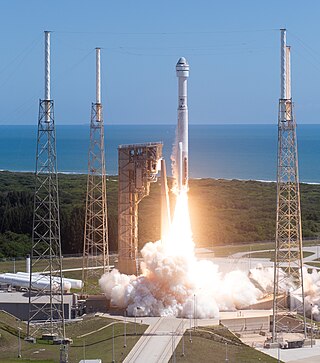
Boeing Crew Flight Test (Boe-CFT) is the first crewed mission of the Boeing Starliner capsule. Launched on 5 June 2024, the mission flew a crew of two NASA astronauts, Barry E. Wilmore and Sunita Williams, from Cape Canaveral Space Force Station to the International Space Station. The mission was meant to last eight days, ending with a landing in the American Southwest on 14 June. But the capsule's thrusters malfunctioned and helium leaked as Starliner docked with the ISS, and NASA decided not to fly the spacecraft back to Earth until the problems were solved or at least better understood. Wilmore and Williams remain aboard the ISS; so far, the mission has lasted 61 days.

Boeing Starliner-1, also called Post Certification Mission-1 (PCM-1), is planned to be the first operational crewed mission of the Boeing Starliner to the International Space Station (ISS) as part of the Commercial Crew Program. It will be the fourth orbital flight mission of the Starliner overall. It is scheduled to launch no earlier than August 2025, transporting members of a future ISS Expedition.

SpaceX Crew-1 was the first operational crewed flight of a Crew Dragon spacecraft, and the maiden flight of the Crew Dragon Resilience spacecraft. It was also the second crewed orbital flight launch by the United States since that of STS-135 in July 2011. Resilience launched on 16 November 2020 at 00:27:17 UTC on a Falcon 9 from Kennedy Space Center Launch Complex 39A (LC-39A), carrying NASA astronauts Michael Hopkins, Victor Glover and Shannon Walker, along with JAXA astronaut Soichi Noguchi, all members of the Expedition 64 crew. The mission was the second overall crewed orbital flight of the Crew Dragon.

The Boeing Orbital Flight Test-2 was a repeat of Boeing's unsuccessful first Orbital Flight Test (Boe-OFT) of its Starliner spacecraft. The uncrewed mission was part of NASA's Commercial Crew Program. OFT-2, using Starliner Spacecraft 2, launched 19 May 2022 and lasted 6 days. Starliner successfully docked with the International Space Station (ISS) on 21 May 2022. It stayed at the ISS for 4 days before undocking and landing in the White Sands Missile Range on 25 May 2022.
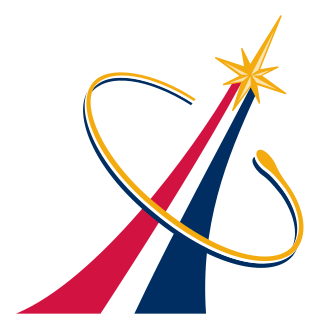
The Commercial Crew Program (CCP) provides commercially operated crew transportation service to and from the International Space Station (ISS) under contract to NASA, conducting crew rotations between the expeditions of the International Space Station program. American space manufacturer SpaceX began providing service in 2020, using the Crew Dragon spacecraft, and NASA plans to add Boeing when its Boeing Starliner spacecraft becomes operational no earlier than 2025. NASA has contracted for six operational missions from Boeing and fourteen from SpaceX, ensuring sufficient support for ISS through 2030.
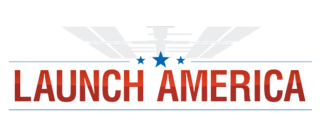
Launch America is a public–private partnership between the United States and multiple space companies, closely related to NASA's Commercial Crew Program. The term "Launch America" was used as early as May 2016. The initiative aims to end NASA's reliance on Roscosmos by developing launch systems that can carry crews to space from American soil.

SpaceX Crew-2 was the second operational flight of a Crew Dragon spacecraft, and the third overall crewed orbital flight of the Commercial Crew Program. The mission was launched on 23 April 2021 at 09:49:02 UTC, and docked to the International Space Station on 24 April at 09:08 UTC.

Expedition 67 was the 67th long-duration expedition to the International Space Station. The expedition began upon the departure of Soyuz MS-19 on 30 March 2022, with NASA astronaut Thomas Marshburn taking over as ISS commander. Initially, the expedition consisted of Marshburn and his three SpaceX Crew-3 crewmates Raja Chari, Kayla Barron and Matthias Maurer, as well as Roscosmos cosmonauts Oleg Artemyev, Denis Matveev and Sergey Korsakov, who launched aboard Soyuz MS-21 on March 18, 2022 and transferred from Expedition 66 alongside the Crew-3 astronauts. However, continued international collaboration has been thrown into doubt by the 2022 Russian invasion of Ukraine and related sanctions on Russia.

SpaceX Crew-3 was the Crew Dragon's third NASA Commercial Crew operational flight, and its fifth overall crewed orbital flight. The mission successfully launched on 11 November 2021 at 02:03:31 UTC to the International Space Station. It was the maiden flight of Crew Dragon Endurance.

Expedition 68 was the 68th long-duration expedition to the International Space Station. The expedition began upon the departure of Soyuz MS-21 on 29 September 2022, with ESA astronaut Samantha Cristoforetti taking over as ISS commander, and ended upon the uncrewed departure of the Soyuz MS-22 spacecraft on 28 March 2023.

SpaceX Crew-6 was the sixth crewed operational NASA Commercial Crew flight of a Crew Dragon spacecraft, and the ninth overall crewed orbital flight. The mission launched on 2 March 2023 at 05:34:14 UTC, and it successfully docked to the International Space Station (ISS) on 3 March 2023 at 06:40 UTC. The Crew-6 mission transported four crew members to the International Space Station (ISS). Two NASA astronauts, a United Arab Emirates astronaut, and a Russian cosmonaut were assigned to the mission. The two NASA astronauts are Stephen Bowen and Warren Hoburg. The cosmonaut, Andrey Fedyaev, was reassigned from Soyuz MS-23. Sultan Al Neyadi was the commander of the United Arab Emirates' mission on the flight.

SpaceX Crew-7 was the seventh crewed operational NASA Commercial Crew flight and the eleventh overall crewed orbital flight of a Crew Dragon spacecraft. The mission launched on 26 August 2023. The Crew-7 mission transported four crew members to the International Space Station (ISS), consisting of one NASA astronaut Jasmin Moghbeli, one ESA astronaut Andreas Mogensen of Denmark, one JAXA astronaut Satoshi Furukawa, and one Roscosmos cosmonaut Konstantin Borisov. Mogensen was the first non-American to serve as a pilot of Crew Dragon.

Axiom Mission 3 was a private spaceflight to the International Space Station. The flight launched on 18 January 2024, and lasted for 21 days, successfully splashing down in the Atlantic Ocean. It was operated by Axiom Space and used a SpaceX Crew Dragon spacecraft. The booster, B1080, had previously flown Axiom-2, among other high-profile missions.

